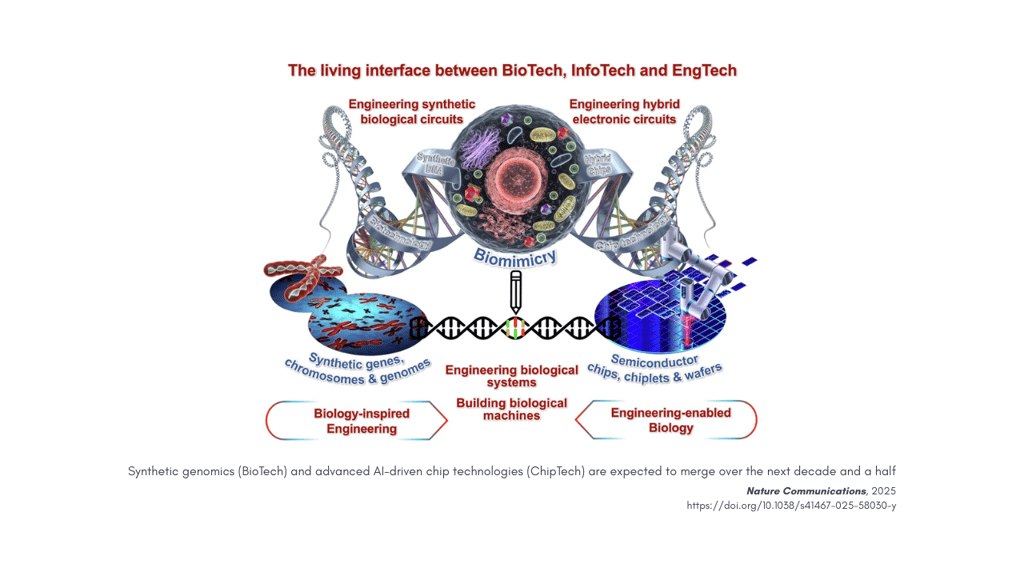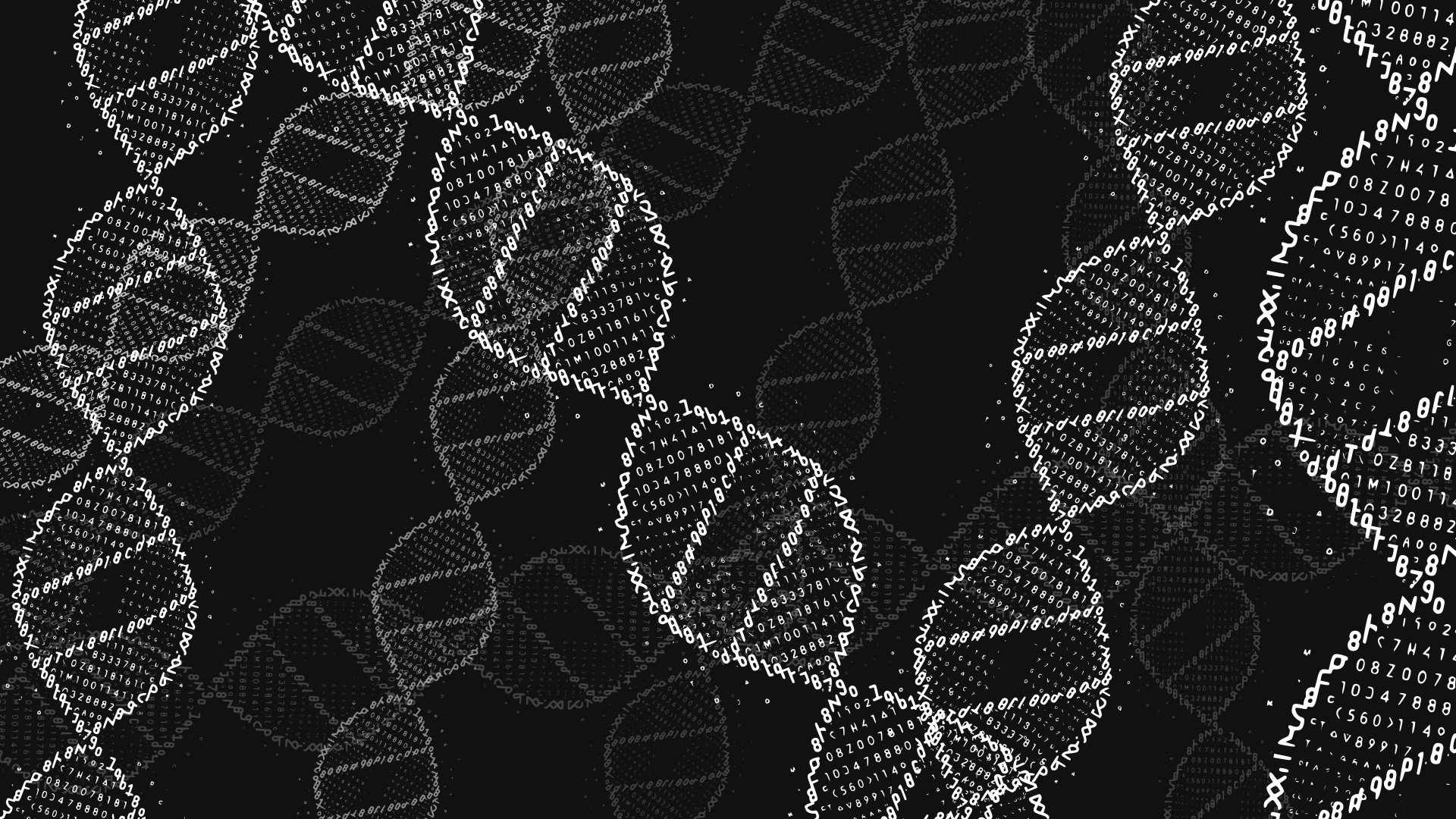Biology as the Future of Computing and Engineering


The idea of combining biology with computing and engineering has deep historical roots. Since the 17th century, philosophers such as Descartes viewed cells as biological machines, and terms like “factory” or “chemical machine” were often used to describe cellular functions. After World War II, the fields of cybernetics and molecular biology inspired analogies between genetic systems and electronic circuits. For example, Monod and Jacob interpreted the lac operon in E. coli as a simple Boolean circuit, and Monod in his book Chance and Necessity explicitly linked biological logic to George Boole’s algebra. In the 1950s, Richard Feynman proposed the idea of computing with atoms and molecules, which became reality in 1994 when Leonard Adleman used DNA to solve a Hamiltonian problem (Travelling Salesman) at the molecular level. Although DNA was initially expected to solve complex computational problems beyond the reach of conventional computers, it was later found that Adleman’s model required an exponential amount of DNA, making it impractical for large-scale applications.
After Adleman’s work, biocomputing research shifted from solving NP-hard problems to using unique biological features. One example is DNA-based data storage, which offers thousands of times greater density and durability compared to magnetic or optical media. Some teams have developed molecular hybridization methods to search for similar images directly within DNA digital libraries. DNA strand-displacement enables the creation of molecular logic circuits and neuromorphic computing inside living cells, such as perceptrons implemented in E. coli. As silicon chips face limits in scaling and energy efficiency, researchers are looking to biological solutions. Cellular computing, liquid-based computing, and DNA data storage can work alongside traditional chips for greater efficiency. Even simple organisms like slime molds can solve complex network problems with far less energy than modern computers, showing the potential of natural intelligence in computing technologies.
Synthetic biology develops the concept that genetic material can be designed like electronic circuits. Between 2000 and 2003, pioneering groups built simple genetic circuits in E. coli, such as a binary toggle switch and a transcriptional oscillator (repressilator). These achievements used basic genetic parts to produce logic and oscillatory functions in bacterial cells. Since then, synthetic biology has grown rapidly. The Synthetic Biology 1.0 conference at MIT in 2004 brought together scientists from biology, chemistry, physics, engineering, and computer science to advance research. The iGEM competition was launched to encourage student innovation in engineered biology. The design-build-test-learn principle is now widely applied, combining computer-aided design (BioCAD) with DNA assembly and experimental testing. Biology can be “programmed” genetically, allowing microbial cells to be engineered as cellular factories for chemicals, medicines, or biofuels, as well as smart cells for therapy and sensing. Advanced tools such as biofoundries and low-cost DNA sequencing and synthesis accelerate the process. Real-world products already exist, such as plant-based meat containing genetically produced heme and CAR-T cancer therapies. Over the last decade, biotechnology startups like Ginkgo Bioworks, Zymergen, and Amyris have raised billions of dollars to develop synthetic biology platforms, with the global market projected to reach around 14 billion USD by 2026.
Biomimetic engineering takes inspiration from nature’s designs for new technologies and materials. A classic example is Velcro, inspired by burr seeds that cling to animal fur. In aviation, airplane wing designs borrow aerodynamic principles from birds, and the Wright brothers studied bird flight before their first experiments. In modern times, the Japanese Shinkansen train nose was designed like a kingfisher’s beak to reduce tunnel noise. Biomimetic research now extends to robotics and materials, such as shark skin-inspired surfaces to reduce drag and biofouling on ships, as well as insect-like or fish-like robots for environmental exploration. This approach combines biology and engineering by studying natural structures, such as spider silk proteins or neural systems, and replicating them with mechanical, electronic, or nanomaterial technologies.
Academia and global research institutions play a central role in advancing these fields. Leading universities have established synthetic biology research centers, and competitions like iGEM promote interdisciplinary collaboration. Major technology companies are investing in neuromorphic and hybrid AI research, while biotech firms build DNA foundries. Governments in the United States, the United Kingdom, the European Union, and China have released bioeconomy strategies to support bioengineering and innovation from the laboratory to the market. Collaborative initiatives such as the Engineering Biology Research Consortium in the US set long-term R&D agendas. Meanwhile, biotech startups are emerging with significant funding, building technology platforms similar to the software revolution. While investment is large, a few commercially successful products are needed to strengthen market confidence. Many in the synthetic biology community also promote open-source technology sharing to prevent monopolies and support ecosystem growth.
Biology-digital technologies are already being applied. DNA storage has successfully encoded digital data, such as text and images, into synthetic DNA with far greater density than hard drives, along with molecular hybridization search methods. Complex genetic circuits have been built in bacterial or mammalian cells, enabling cellular biocomputers to process biological signals. Organ-on-chip devices, which contain living cells, allow faster and more accurate drug testing by simulating human organs at a micro scale. Synthetic devices based on CRISPR and other molecular systems are being developed for real-time detection of pathogens or harmful chemicals in the environment, acting as early warning systems. Biomanufacturing uses engineered microbes to produce chemicals, food, and medicines at an industrial scale. Bio-hybrid robotics and AI include soft robots made of biological materials, brain-inspired neuromorphic chips, and neural network integrations with genetic circuits.
Looking ahead, researchers and industry leaders predict that a semi-synthetic biology era will emerge, combining synthetic biology with semiconductor technology. Future computational substrates may be hybrid biochips that store and process information using biological molecules. This could lead to massive improvements in long-term storage and processing power beyond conventional silicon. Potential applications include DNA-based cloud computing, self-repairing cellular circuits, and protein-based sensors for biological AI. Experts suggest that the future of computing will involve co-design between nature and technology, rather than simply making faster chips or advancing quantum computing. Over the next 10 to 20 years, synthetic biology products are expected to become part of daily life, from food and clothing to medicines and construction materials made by cells. Everyone may use products derived from synthetic biology, from plant-based burgers to recombinant vaccines. The concept of cellular supremacy is also emerging, focusing on areas where cell-based computers outperform conventional ones in cost or efficiency. Fields such as soft robotics with biomaterials, smart environmental sensor networks, and biologically inspired AI architectures are likely to grow rapidly. By harnessing the evolutionary advantages of molecular automation and energy efficiency, future artificial intelligence could be based on biology, blending genetic code with digital technology. This vision points to biology as the new foundation for computing and engineering, opening a new era of efficient and sustainable technology.
Biology as the Future of Computing and Engineering

(+62) 815-1304-5845
© 2025. All rights reserved.
Reach us
Got any questions?
Yogyakarta, Indonesia
